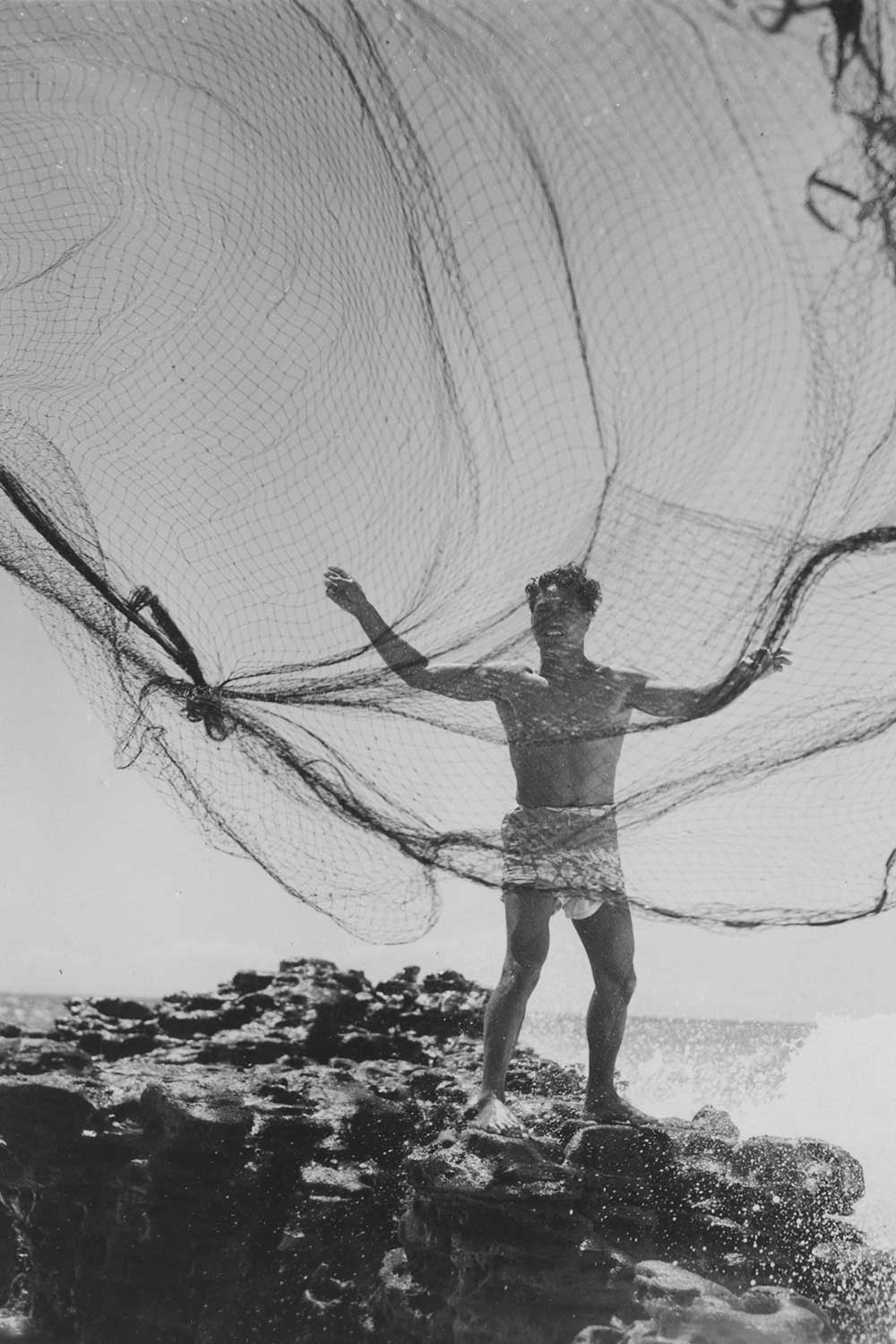“Wai” means water. “Waiwai” means wealth. Prior to European contact, ancient Hawaiians flourished along the coastline of the ahupua‘a, or land division, of Waikīkī. This area was once the seat of power for O‘ahu, and was populated and visited by ali‘i, Hawaiian royalty. It was also a significant region for farming taro, the islands’ nourishing staple food. “The first settlers from Kahiki (Tahiti) and the Marquesas Islands saw the potential [of Hawai‘i] and fell in love, spurring generations of migrations,” says Hi‘inani Blakesley, Halekulani’s cultural advisor. “Waikīkī was settled around 700 AD. It was deemed an excellent site for agriculture and aquaculture. The fresh water was key.”
Although initially it was taro that was cultivated in the area, Waikīkī’s reef-protected beach also proved to be the perfect breeding ground for fishing and fish farming in what Hawaians called loko i‘a, or fishponds. In Waikīkī 100 BC to 1900 AD: An Untold Story, historian George Hu‘eu Sanford Kanahele writes that Waikīkī’s first fishponds were most likely loko i‘a kalo, in which both taro and fish were raised. The fish best suited for these brackish, calm environs were the o‘opu (common goby), which would be swept down into the Waikīkī flats from overflowing streams, and the āholehole (silver perch).
Beyond the ingenious loko i‘a, in which fish were trapped, grown, and harvested, ancient Hawaiians also devised intricate systems for ocean fisheries management and fishing using canoes, kites, long lines, and even surfboards. Although the loko i‘a did not yield nearly as much food as the open ocean, Hawai‘i’s fishponds were nonetheless the most advanced in all of Polynesian history, and helped to sustain a population in the islands that some estimate was as high as one million people.
A vital part of this “sacred technology,” Kanahele writes, were the ko‘a, or shrines, dedicated to the fish god Ku‘ula. These shrines would be placed along the shore to remind fishermen of a kapu (taboo) against overfishing, or fishing during spawning season. One such ko‘a was unearthed in a former bungalow of what is now Halekulani, and was then painstakingly relocated by a team of Hawaiian cultural advisors and experts to an area just outside Halekulani’s Orchids restaurant.
In the early 20th century, before Waikīkī debuted to the world, there were not even a billion people on the planet yet (compared to our current 7.5 billion). Few Westerners had the means to travel to Hawai’i; far less were able to stay and establish businesses. The names of these innovative entrepreneurs are familiar throughout Hawai‘i: Cooke, Baldwin, Dillingham, Lewers. Those with soul and vision were inclusive and collaborative with locals. Robert Lewers, who built the first two-story guest house here at Kawehewehe Beach in 1883, was one such visionary. “The fishers were invited to beach their canoes and dry their nets under the sheltering hau trees along the water’s edge,” wrote Thelma Chang in Halekulani: A Gracious History. Grateful, locals dubbed the spot “Halekulani,” widely interpreted as “house befitting heaven.” Eventually, Blakesley says, the fishermen began taking guests out on canoes and showed them activities like fishnet throwing. “These ‘beach boys’ became part of the daily running of the hotels,” Blakesley says. And what would Waikīkī be without beach boys? Not our Waikīkī. Here, the hospitality industry and ocean-faring community co-exist with a common spirit of ho‘okipa, or hospitality, welcoming newcomers and sharing the ocean—our place of healing, our breadbasket, our wealth.


































Share: